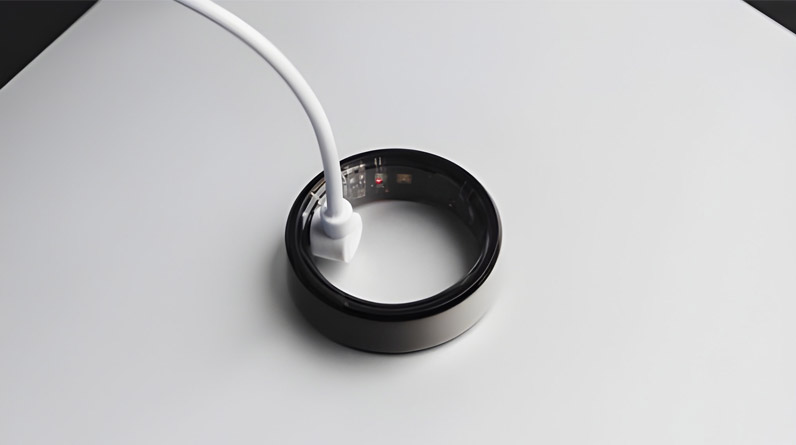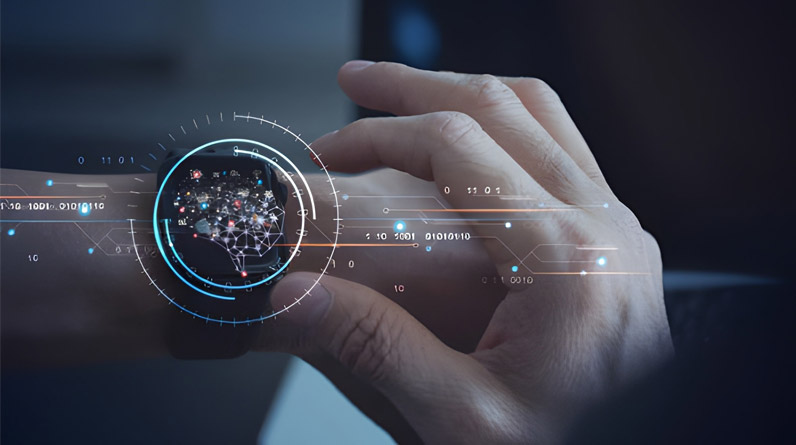Smartwatches revolutionized how we interact with technology, transforming wrists worldwide into command centers for health tracking, notifications, and contactless payments. However, as we progress through 2025, the wearable technology landscape is experiencing a seismic shift. The next generation of wearables promises to be smaller, smarter, and surprisingly invisible—embedding intelligence into rings, clothing, earbuds, and even our bodies.
This evolution isn’t about replacing smartwatches; it’s about creating an interconnected ecosystem of specialized devices that work harmoniously to enhance every aspect of our lives. Let’s explore what’s emerging beyond the smartwatch and why these innovations matter.
The Shift from Visible to Invisible Technology
The fundamental philosophy driving wearable innovation has changed. While smartwatches announced their presence with screens and notifications, next-generation wearables are designed to disappear into the fabric of daily life—literally and figuratively.
Why Invisibility Matters
Modern consumers seek technology that enhances their lives without demanding constant attention. The future of wearables embraces three core principles:
- Seamless Integration: Technology that becomes part of your natural accessories and clothing
- Always-On Intelligence: Devices that continuously monitor and analyze without user intervention
- Contextual Awareness: Systems that understand your needs before you articulate them
This shift reflects a maturation in wearable technology, moving from novelty to necessity.
Smart Rings: Power in Your Palm

Smart rings represent the perfect evolution of wearable minimalism. These tiny devices pack impressive capabilities into a form factor that feels more like jewelry than technology.
Leading the Ring Revolution
Products like the Oura Ring Gen3 and Samsung Galaxy Ring have demonstrated that you don’t need a screen to deliver meaningful insights. These devices excel in areas where smartwatches fall short:
| Feature | Smart Ring | Smartwatch |
|---|---|---|
| Battery Life | 5-7 days | 1-2 days |
| Discretion | Highly discreet | Noticeable |
| Sleep Tracking | Excellent (comfortable) | Good (can be bulky) |
| Payment Capability | NFC-enabled | NFC-enabled |
Real-World Applications
Smart rings shine in scenarios where traditional wearables prove impractical. Athletes engaging in contact sports, musicians playing instruments, or professionals in clinical settings benefit from hands-free health monitoring without the bulk. The rings’ extended battery life eliminates the charging anxiety that plagues smartwatch users, enabling true 24/7 health tracking including comprehensive sleep analysis.
Hearables: Your Ears Become Health Sensors
Wireless earbuds have transcended their original purpose as audio accessories. The latest generation of “hearables” positions these devices as sophisticated health monitoring tools with a unique anatomical advantage.
The Proximity Advantage
Unlike wrist-worn devices, earbuds sit remarkably close to the brain, enabling them to capture neural signals and brainwave activity through integrated EEG sensors. Companies like Naox Technologies and Kokoon are pioneering this space, developing earphones that can:
- Monitor mental health by detecting stress and anxiety indicators
- Track emotional states in real-time for mood-responsive content delivery
- Improve sleep quality through brainwave monitoring and adaptive audio
- Measure core body temperature and heart rate variability
AI-Powered Personal Assistants
Modern hearables incorporate artificial intelligence to become proactive rather than reactive. Real-time language translation, context-aware voice assistance, and predictive content recommendations transform earbuds into always-on personal computing interfaces. This positions hearables as potential successors to smartphones for routine tasks and information access.
Smart Clothing and E-Textiles: Fashion Meets Function
The integration of technology into fabric represents perhaps the most literal interpretation of “wearable” technology. Smart clothing eliminates the need for additional devices by embedding sensors directly into garments.
Beyond Athletic Performance
While early adopters include professional athletes using brands like Hexoskin and Under Armour for biometric monitoring, smart clothing applications extend far beyond sports:
- Healthcare Monitoring: Continuous vital sign tracking for chronic condition management
- Climate Adaptation: Temperature-regulating fabrics that adjust to environmental conditions and body heat
- Posture Correction: Garments that provide haptic feedback to encourage proper alignment
- Muscle Recovery: Compression wear with embedded sensors monitoring muscle activity and fatigue
The Sustainability Factor
An exciting development in smart clothing involves energy-harvesting capabilities. Solar-powered fabrics and kinetic energy collection systems promise to eliminate charging requirements entirely, addressing one of wearable technology’s most persistent pain points while reducing environmental impact.
Removable Sensor Pods: Flexibility Meets Precision
For fitness enthusiasts and athletes, removable sensor pods offer a compelling alternative to fixed wearables. These small, versatile devices can be positioned anywhere on the body using specialized clothing or accessories.
Professional-Grade Analytics for Everyone
Technologies once reserved for Premier League footballers and NFL players through companies like Statsport and Kinexon are becoming consumer-accessible. Removable pods provide several advantages:
- Targeted Tracking: Place sensors where they matter most for specific activities
- Enhanced Accuracy: Better data quality compared to wrist-based measurements for upper body movements
- Sport-Specific Insights: Optimized for activities where watches prove impractical or dangerous
Augmented Reality Glasses: Merging Digital and Physical
AR eyewear represents the bridge between current wearables and the immersive digital experiences of tomorrow. Products like Apple Vision Pro and Meta Ray-Ban Stories 2 are making augmented reality increasingly mainstream.
Enterprise and Consumer Applications
The versatility of AR glasses positions them for both professional and personal use:
Business Applications:
- Remote training and expert guidance with real-time visual overlays
- Virtual meetings featuring 3D holograms of participants
- Manufacturing assistance with step-by-step visual instructions
Consumer Benefits:
- Hands-free navigation with route information in your field of vision
- Real-time language translation of text and speech
- Immersive gaming experiences that blend with physical surroundings
Medical-Grade Health Monitoring: From Fitness to Healthcare
Perhaps the most significant evolution in wearable technology is the shift from fitness tracking to legitimate healthcare tools. Next-generation wearables incorporate medical-grade sensors capable of preventive healthcare and early disease detection.
Continuous Monitoring Without Invasive Procedures
Breakthrough technologies are eliminating the need for traditional testing methods:
- Continuous Glucose Monitoring: Devices like Abbott’s Lingo and Dexcom Stelo provide real-time blood sugar readings without finger pricks
- Blood Pressure Tracking: Non-invasive sensors offering continuous hypertension monitoring
- Cardiac Health: ECG capabilities detecting irregular heart rhythms before symptoms manifest
- Hydration Analysis: Bioimpedance sensors measuring fluid balance for athletes and patients
AI-Driven Predictive Healthcare
Artificial intelligence transforms collected health data into actionable insights. Rather than simply reporting metrics, AI algorithms identify patterns and predict potential health issues before symptoms appear. This proactive approach represents a fundamental shift from reactive to preventive healthcare, potentially saving lives and reducing healthcare costs.
Brain-Computer Interfaces: The Next Frontier
While still emerging, brain-computer interfaces (BCIs) represent the ultimate evolution of wearable technology—direct communication between human thought and digital systems.
Current Developments and Future Promise
Companies like Neuralink and NextMind are pioneering consumer-accessible BCIs that interpret brain signals for device control. Early applications include:
- Hands-free computer operation for accessibility
- Enhanced VR experiences responding to mental states
- Mental typing for faster communication
- Assistive technology for individuals with mobility limitations
Ethical Considerations
As BCIs become more sophisticated, society faces important questions about privacy, consent, and data security. The ability to read neural signals raises concerns about mental privacy and the potential for misuse. Responsible development and robust regulatory frameworks will be essential as this technology matures.
Building the Connected Ecosystem
The future of wearable technology isn’t about any single device dominating the market. Instead, we’re moving toward an interconnected ecosystem where specialized wearables work together seamlessly.
The Hybrid Approach
Consider a typical user’s setup in 2026:
- A smart ring for continuous health monitoring and sleep tracking
- AI-powered earbuds for communication and mental health insights
- Smart clothing for athletic performance during workouts
- AR glasses for professional tasks and navigation
- A smartwatch serving as the hub coordinating all devices
Each device specializes in what it does best, with data flowing seamlessly between them to provide comprehensive insights.
Challenges on the Horizon
Despite exciting possibilities, several obstacles remain:
Privacy and Security
As wearables collect increasingly intimate data—from brainwaves to continuous health metrics—protecting user privacy becomes paramount. Robust encryption, transparent data policies, and user control over information sharing are non-negotiable requirements.
Battery Technology
While energy-harvesting solutions show promise, most wearables still depend on battery power. Balancing computational power with battery life remains an ongoing challenge, particularly for devices running complex AI algorithms.
Interoperability Standards
For a truly connected ecosystem, devices from different manufacturers must communicate effectively. Industry-wide standards for data sharing and device integration are essential to prevent fragmentation.
Preparing for the Wearable Revolution
As these technologies mature, both consumers and businesses should prepare for significant changes in how we interact with technology.
For Consumers
- Prioritize privacy when selecting wearable brands
- Consider your specific needs rather than chasing the latest technology
- Expect smaller, more specialized devices rather than all-in-one solutions
- Stay informed about data rights and security practices
For Businesses
- Explore how wearable technology can enhance employee wellness and productivity
- Invest in AI application development services for custom wearable solutions
- Consider accessibility—design for voice, gesture, and biometric interfaces
- Build applications that merge health monitoring with real-world utility
Conclusion: The Invisible Future
The future of wearable technology extends far beyond improved smartwatches. We’re entering an era where technology becomes invisible—woven into our clothing, embedded in our accessories, and perhaps eventually integrated with our bodies. These devices won’t just track our activities; they’ll predict our needs, protect our health, and seamlessly connect us to the digital world.
Smart rings, hearables, e-textiles, removable sensors, AR glasses, and brain-computer interfaces each bring unique capabilities to this evolving ecosystem. Together, they promise a future where technology enhances human capability without dominating human attention.
The question isn’t whether we’ll move beyond smartwatches—we already are. The real question is how quickly we’ll adapt to a world where our most powerful technologies are the ones we can barely see. As these innovations mature and converge, one thing becomes clear: the future of wearable technology isn’t on our wrists—it’s everywhere.


